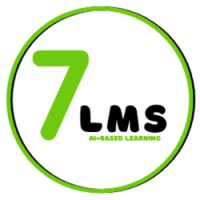
Introduction
Many students in developing countries still face strong barriers in education. Schools lack teachers. Classrooms lack space. Families lack learning tools. Because of these limits, many children fall behind. Yet, digital change grows fast. EdTech in developing countries creates new hope. Digital solutions support students, teachers, and communities. The goal is simple: fair and strong learning for every child.
As an EdTech and LMS provider, we see daily how digital tools improve learning. This article explains how educational technology builds better access, better lessons, and better futures.
1. New access through digital learning
One of the biggest problems in developing countries is access. Many students live far from schools. Some villages have no trained teachers. Therefore, digital tools create new learning paths.
Students can join lessons from simple phones. They watch short videos, read digital books, or practice with apps. This removes borders.
Digital learning allows students to study anytime. Remote learners join the same content used in growing economies. This creates fairness. This creates hope. EdTech in developing countries grows because access becomes possible for all.
2. Personalized learning with e-learning tools
Every child learns differently. Some students learn fast. Some need more time. E-learning tools help teachers follow each student’s level.
Learning platforms track progress. They show where a student needs help. Teachers give support because they see clear results. Students follow small steps. They work at their own pace. As a result, this builds confidence. It also supports children who missed school in the past. Therefore, personalized digital learning reduces the gap between strong and weak learners.
As an LMS provider, we design tools that guide teachers with simple data. Institutions can use these tools to plan lessons and undoubtedly support every student.
3. Lower costs and higher impact
Many families in developing countries struggle with education costs. Books, transport and school supplies are expensive. Because of this, many students stop early. EdTech offers low-cost solutions. Online resources replace heavy books. Mobile learning removes travel costs. Digital classrooms reduce the need for large buildings. Therefore, schools save money. Families save money. Students gain more access. Most important, digital tools stay available all year. Students review lessons again and again without extra cost. This makes learning stable and strong.
4. Better teachers through digital support
Teacher shortage is a major issue in developing countries. Many schools have too few trained teachers. On the other hand, some teachers have limited training. However, EdTech gives teachers new strength. Online courses help teachers improve skills. Apps explain new teaching methods. Digital platforms share ready-made lessons. Therefore, teachers grow. They feel supported. Students receive better lessons.
5. Strong community impact
EdTech does more than support students. It supports families and communities. Parents learn how to help their children. Adults use online learning for job skills. Young people gain digital knowledge for the future. As a result, whole communities grow. More skills mean more jobs. More jobs mean better lives.
EdTech in developing countries plays a key role in long-term growth. It is not only a school tool. It is a social tool.
6. Safe learning spaces through digital platforms
For developing countries, safe learning spaces are very important. Some areas do not offer safe physical schools. Because of this, digital platforms create a safe and calm place for learning. Students join lessons from home. Teachers send tasks through secure systems. Also, parents follow progress. As a result, this helps many learners, especially girls. In some regions, girls cannot travel to school for safety or cultural reasons. Therefore, EdTech supports equal learning and builds safe digital classrooms.
7. Access to global knowledge and skills
Digital learning gives students access to global content. They not only learn local lessons. They explore worldwide knowledge. Students use online libraries, open courses, and free education sites. These tools help them learn new skills such as coding, math, languages, and science. This opens new doors for their future. They gain skills for modern jobs.
Thus, EdTech connects students with global opportunities and higher goals.
8. Better monitoring through learning analytics
Many schools in developing countries struggle with student tracking. Paper records get lost or contain mistakes. As a result, this creates learning gaps. However, EdTech solves this problem. Learning analytics tools show real progress.
Teachers:
- See weak points
- Find students who need support
- also plan lessons better
- Parents track learning too. School leaders make decisions based on real data. Therefore, digital tracking systems improve overall learning quality.
Conclusion
EdTech in developing countries helps close the education gap. It brings access to remote areas, supports personalized learning and reduces costs. Thanks toeducational technology, digital learning, e-learning tools, and online education, students gain clear opportunities.
Challenges remain, such as the digital divide and teacher training. Yet, EdTech continues to grow. Thanks to simple and strong tools, we help build a fair future. EdTech in Developing Countries shows that every learner can reach success when the right digital support is in place.
Global teams grow faster with the right tools. A multilingual LMS removes barriers and builds stronger learning experiences.
Learn how it works here: What is a multilingual LMS, and why is it important for global teams?
Disclaimer:
This blog is for informational and awareness purposes only. The content can be verified from other sources. The author accepts no legal responsibility for any decisions made based on this information.



